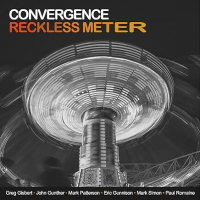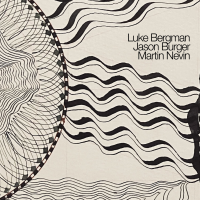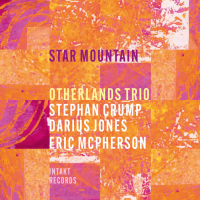Home » Jazz Articles » Album Review » Various artists: Changüí - The Sound of Guantánamo
Various artists: Changüí - The Sound of Guantánamo
More and more, Western society's division of labor is stripping away the idea of communal music,
Except, apparently, in Cuba. Or at the very least, Guantánamo province.
What brings this to mind is the splendid new three-disc collection of contemporary folk music from eastern Cuba, "Changüí— The Sound of Guantánamo."
For what the music and the spectacularly illustrated 120-page book in this release illustrate is that there are still places in the world where music is a community endeavor, where friends and neighbors gather together in the evening and play music for their own enjoyment.
How much of this is organic, and how much is a product of the circumstances imposed upon the community by a repressive dictatorship is a great question—and one sociologists and musicologists will take decades to unravel.
For the music fan, the reality is that Italian producer / engineer Gianluca Tramontana stumbled upon an incredibly vibrant musical community in Cuba's easternmost province, and was smart enough to understand the possibilities of capturing a slice of what he was experiencing. The nearly four hours of music found here varies in arrangement and instrumentation, but is united by a sense of, well, fun. These folks gather together to make music for the love of the experience, and that love comes through in these recordings.
What also unites the numerous combos found here is that they all play in the style of changüí, the regional music of Guantánamo.
Slightly smaller than Florida, and with only about half the population, Cuba nevertheless has very distinctive regional differences in its music. Even a casual listener of Cuban music can't help but notice that the pre-revolutionary music of Havana documented in the Buena Vista Social Club series was built around the son, or that the music found here has a distinct rhythmic pattern different from the western part of the island.
While these are field recordings, made in living rooms, front yards, small restaurants, and neighborhood bars in a cluster of villages around Guantánamo City, as well as in the city itself, the mixes are clear, each instrument heard distinctly. There is often background chatter, particularly at the beginning of a song, but not much different from a live recording.
And while the academics say the authentic changüí ensemble consists of marímbula, bongos, tres (a guitar relative), güiro and vocals, the truly authentic people playing this music aren't so hidebound as to their instrumentation. They play what they have on hand: maracas, bongos, claves. (Although all seem to be acoustic instruments.)
If not "professional" musicians in the sense we understand it in the United States, most of the players here are of a very high order. Many of the instrumental solos display a virtuosic command.
Some of the musicians show up in multiple combos, some apparently drawn up on the spot. (One song is titled, "We Are Here for the Italian" -indicating they'd gathered so Tramontana could record them). The fact that the musicians can sit in with each other on what amounts to jam sessions and quickly gel speaks to a shared knowledge pool of songs and arrangements—not so different from a 1930s jazz cutting session in Kansas City.
This release is a tremendous addition to the Cuban music that is available in the United States. The recordings, the photographs, the essays and sessions notes—everything is top drawer.
Track Listing
DISC 1: Changüí en Yateras (Grupo Estrellas Campesinas); “Inspiración de Los Pueblos (Grupo Familia Vera); “Hazlo Como Yo (Grupo Changüí de Guantánamo); Cuidao Con la Lengua (Las Flores del Changüí); A Los Salseros (El Guajiro y su Changüí ); Vamos a la Rumba (Melquiades y su Changüí con su hermano Mikikí); El Viaje lo Pago Yo (Mikikí con sus hermanos); Eugenio Vera's Introduction Song (Pedro Vera); Reclamación al Changüí (Grupo Estrellas Campesinas); A Mi Madre Lloraba (Mikikí con sus hermanos); Se Acabaron Los Guapos en Yateras (Popó y su Changüí); Latamblé Tocando el Tres (Grupo Changüí de Guantánamo); Guajira (Las Flores del Changüí); Guajiro Guapo en Yateras (Grupo Familia Vera); A Mi Madre Lloraba (Mikikí con sus hermanos y Magdalena); Alúmbrame Que Te Quiero Ver (Popó y su Changüí); Introduction Song (Mikikí y su Changüí); Introduction Song (unknown).
DISC 2: Mujer de mi Pais (Grupo Estrellas Campesinas); Envidia no Mata (Melquíades y su Changüí); Se Quiere tu Baillar Changüí (El Guajiro y su Changüí ); Guajira Cubana (Las Flores del Changüí ); Vamos a Cafetal Nicolasa (Popó y su Changüí); Medley: Mi Cafetal / Sarandonga (Mikikí con sus hermanos); Llegó la Tradición (Popó y su Changüí); 30 de Agosto (Armando “Yu” Rey Leliebre con Mikikí); La Rumba te Llama (Grupo Familia Vera); Ochún (Las Flores del Changüí); Los Santos Mi Estan Llamando (Mikikí y su Changüí); Cuidemos la Capa de Ozono (Popó y su Changüí); La Chacona Pide un Consuelo (Grupo Changüí de Guantánamo); La Llevo al Megaton (Mikikí con sus hermanos); Me Hace Falta una Negra (Pedro & Eugenio Vera); De Aqui pa' Italia (Mikikí con sus hermanos); Al Festival de Yateras (Popó y su Changüí).
DISC 3: Guararey de Pastora (Grupo Estrellas Campesinas); Ven Cubana Ven (El Guajiro Y El Sinsonte con Grupo Changüí de Guantánamo); Yo Vivo Solito en el Mundo (Mikikí y su Changüí); Alto Songo (Las Flores del Changüí); No Me Contó Tabera (Mikikí con sus hermanos); Vamos a la Quinta (Popó y su Changüí); El Tres de Pedro Vera (Grupo Familia Vera); El Guararey de Pastora (Armando “Yu” Rey Leliebre con Mikikí); Digno de Lástima (Grupo Estrellas Campesinas); Toca Marímbula, Olivares (Grupo Changüí de Guantánamo); En Casa de Bella / Changüí Como Yo (Mikikí con sus hermanos): Hay un No Se Qué (El Guajiro y su Changüí ); La Sardina Rumbera (Grupo Familia Vera): La Música Llamada Changüí (Mikikí con sus hermanos); Latamblé Tocando el Tres (El Guajiro Y El Sinsonte con Grupo Changüí de Guantánamo); Goodbye Song (Popó y su Changüí).
Album information
Title: Changüí - The Sound of Guantánamo | Year Released: 2021 | Record Label: Petaluma Records
Tags
PREVIOUS / NEXT
Various Artists Concerts
Support All About Jazz
 All About Jazz has been a pillar of jazz since 1995, championing it as an art form and, more importantly, supporting the musicians who make it. Our enduring commitment has made "AAJ" one of the most culturally important websites of its kind, read by hundreds of thousands of fans, musicians and industry figures every month.
All About Jazz has been a pillar of jazz since 1995, championing it as an art form and, more importantly, supporting the musicians who make it. Our enduring commitment has made "AAJ" one of the most culturally important websites of its kind, read by hundreds of thousands of fans, musicians and industry figures every month.






















